Expansion Valves: Adjustment & Operations
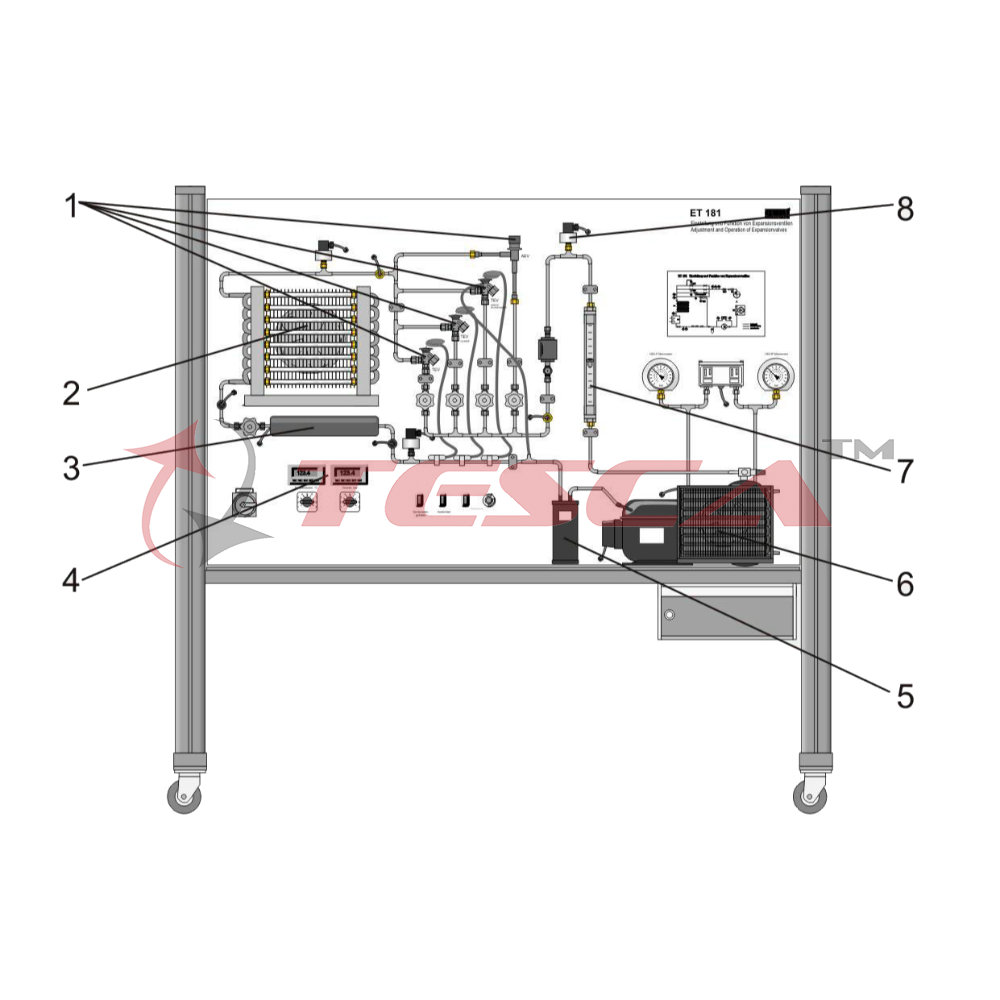
Order Code: 32429
Category: Refrigeration & Air Conditioning Lab
Tesca Expansion Valves: Adjustment & Expansion 32429 enables the investigation of four different expansion valves: TEV (Thermostatic Expansion Valve) with internal pressure compensation, TEV with external pressure compensation, TEV with MOP function
SPECIFICATION
1. Expansion valves,
2. Evaporator with glass tubes,
3. Superheater,
4. Displays for pressure and temperature,
5. Suction line receiver,
6. Condensing unit,
7. Flow meter,
8. Pressure sensor
Features
- Refrigeration circuit with different expansion valves1
- Adjustable superheating1
- Transparent evaporator to monitor the filling level and evaporation process1
- Recording of the control behavior in the software
In the refrigeration circuit the expansion valves, also called primary controllers, also play an important role. The correct selection and adjustment decisively affects the capacity of the overall refrigeration system.
Tesca Expansion Valves: Adjustment & Expansion 32429 enables the investigation of four different expansion valves: TEV (Thermostatic Expansion Valve) with internal pressure compensation, TEV with external pressure compensation, TEV with MOP function (Maximum Operating Pressure) and AEV (Automatic Expansion Valve). The expansion valves can be selected via valves.
Via an evaporator with glass tubes the correct injection and evaporation of the refrigerant can be monitored. An additional electrically heated super-heater at the output of the evaporator enables the investigation of the control behavior with different refrigerant superheating. The locations of the temperature sensor at the evaporator output can be selected. The control behavior can be monitored at a flow meter. Pressure and temperature sensors upstream and downstream of the expansion valve and at the evaporator outlet provide information about the state of the refrigerant and the degree of superheating.
A commercial condensing unit completes the refrigeration circuit.
The measured values can be read on digital displays. At the same time, the measured values can also be transmitted directly to a PC via USB. The data acquisition software is included. In the software the control behavior of the expansion valves is recorded over time. The trainee can check the correct adjustment of the expansion valve and investigate effects such as hunting.
The well-structured instructional material sets out the fundamentals and provides a step-by-step guide through the exercises.
Specifications
- Trainer from the Sci-tech practical series for the training of mechatronics engineers for refrigeration
- Refrigeration system with different expansion elements: thermostatic expansion valve with internal pressure compensation, thermostatic expansion valve with external pressure compensation, thermostatic expansion valve with MOP function, pressure-controlled expansion valve
- Evaporator with glass tubes to monitor injection and evaporation
- Valve downstream of the evaporator to simulate different pressure losses
- Adjustable electric heater for superheating
- Air-cooled condensing unit
- Sensors record pressures, temperatures, flow rate
- Refrigerant R134a, CFC-free
- Tesca software for data acquisition with USB under Windows Vista or Windows 7
Technical Specifications
- Air-cooled condensing unit
- Power consumption: 485W at -10/32°C
- Refrigeration capacity: 675W at -10/32°C
- Receiver: 1,4L
- Measuring ranges
- Pressure: 2x -1...9bar, 1x -1...24bar
- Temperature: 4 x -40...150°C
- Flow rate: 3...41L/h
Experiments
- Operation and properties of the various expansion valves
- Investigation of the static control characteristic
- Investigation of the dynamic control behavior
- Adjustment of the optimum operating point
- Benefits and disadvantages of the different expansion valves
- Thermostatic expansion valve (TEV) with internal pressure compensation
- Expansion Valve with external pressure compensation
- Expansion Valve with MOP function (Max. Operating Pressure)
- Pressure-controlled expansion valve
- Hunting effect
Requirements
230V, 50Hz, 1 phase or 120V, 60Hz, 1 phase

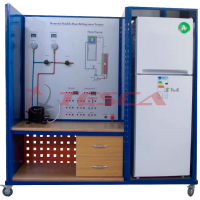

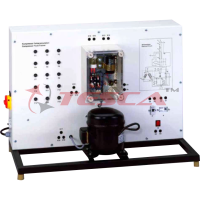
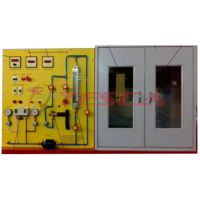

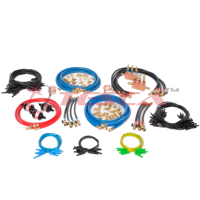
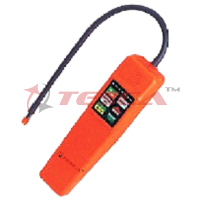
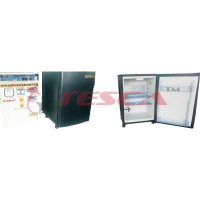
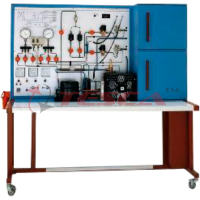

 91-9829132777
91-9829132777